A Photographer Bears Witness to a Suspected Chlorine Attack in Syria
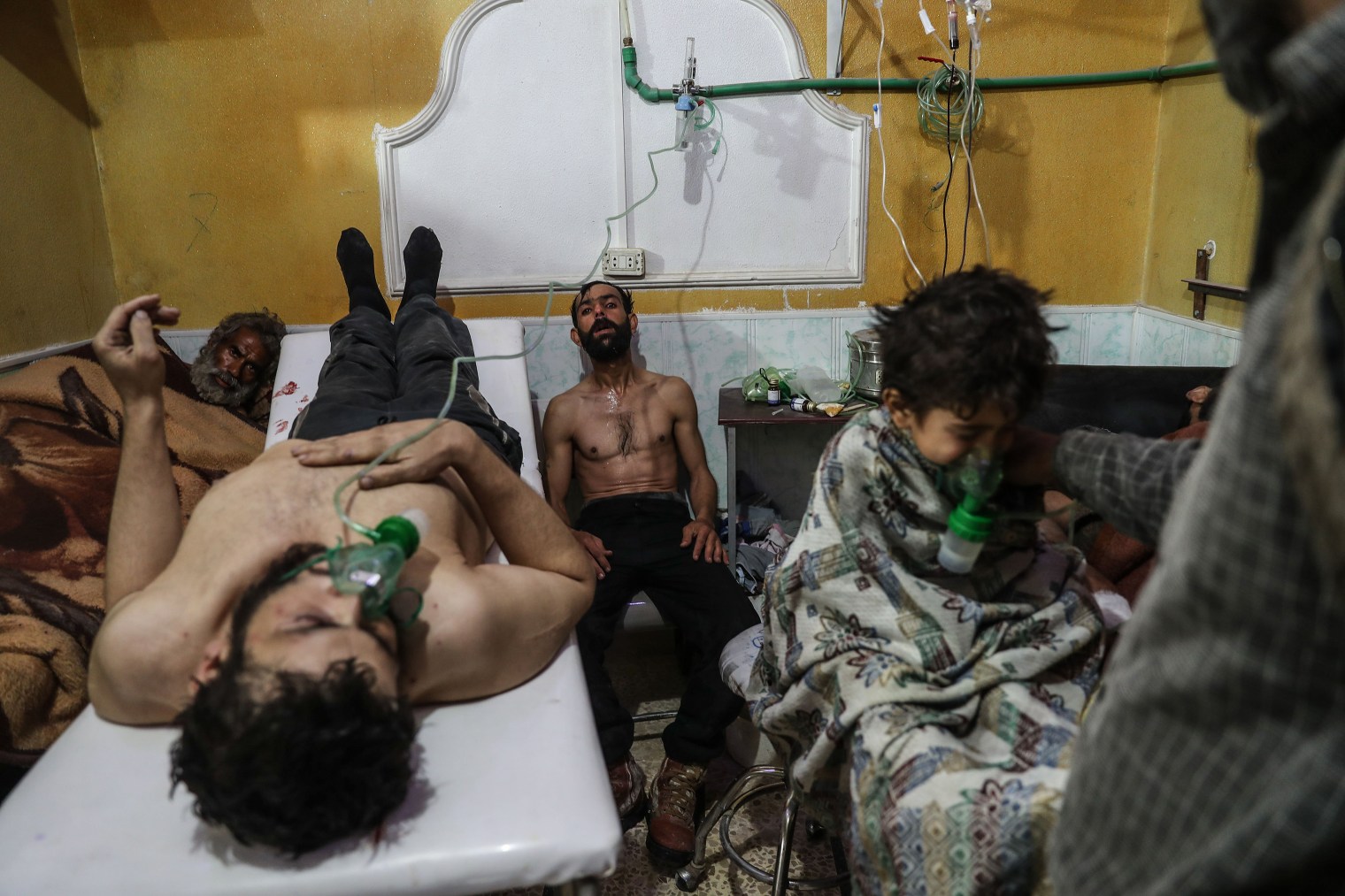 Victims receive treatment after the suspected chemical attack on Feb. 25. EPA-EFE/Shutterstock
Victims receive treatment after the suspected chemical attack on Feb. 25. EPA-EFE/Shutterstock
On Feb. 25, in the wake of a United Nations Security Council resolution calling for a 30-day ceasefire across Syria, activists in the rebel enclave of Eastern Ghouta outside Damascus reported a suspected chemical attack in the area of Sheifouniyeh. One infant boy died after exposure consistent with chlorine, according to the Syrian American Medical Society, and more than a dozen others were said to be injured.
The opposition-held eastern suburbs of some 400,000 people had been under intense government bombardment in the days prior, resulting in the deaths of hundreds. On Feb. 26, the White House said Syria was “terrorizing hundreds of thousands of civilians with airstrikes, artillery, rockets, and a looming ground attack. The regime’s use of chlorine gas is—as a weapon—only intensifies this.” Russia, which backs Syria’ government in the war, rejected claims that forces loyal to that government were at fault.
Mohammed Badra, a photographer with the European Pressphoto Agency, describes what he saw as victims were treated. His testimony has been lightly edited for brevity and clarity.
Graphic content could be disturbing to some readers
The first thing I noticed when I arrived to the medical center in Eastern Ghouta was the smell. Three children were surrounded by three nurses. I asked an injured man what had happened, and he said a chemical attack had targeted civilians in Sheifouniyeh.
One injured man told me he couldn’t say for sure, but that it looked like a chlorine attack. It smelled like what we use in the house to wash dishes. He told me that he didn’t hear an explosion, just the sound of the rocket hitting the ground. Another person was vomiting continuously and heavily.
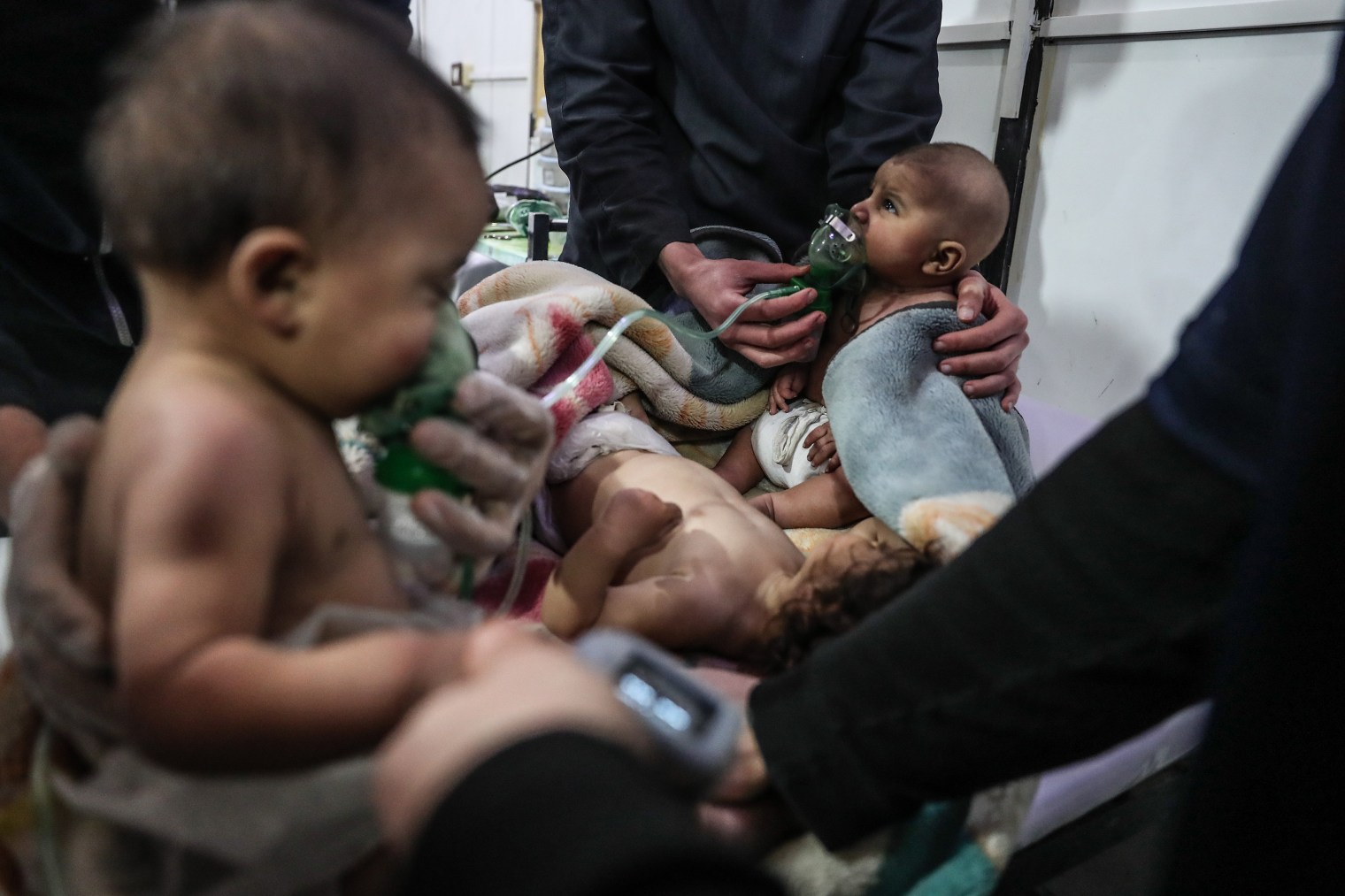 Several infants, among more than a dozen said to be exposed to chlorine, receive treatment. EPA-EFE/Shutterstock
Several infants, among more than a dozen said to be exposed to chlorine, receive treatment. EPA-EFE/Shutterstock
Until this moment, I didn’t take any pictures. I just watched and observed all the details.
The injured were hunched over, like they were carrying something heavy on their backs, breathing heavily. I saw their eyes, and it looked like they were crying badly. They were not wearing shirts. The nurses had collected the affected clothes in a bag and took them away, because they were apparently covered with gas. I also saw volunteers with the White Helmets who got affected as they rescued people.
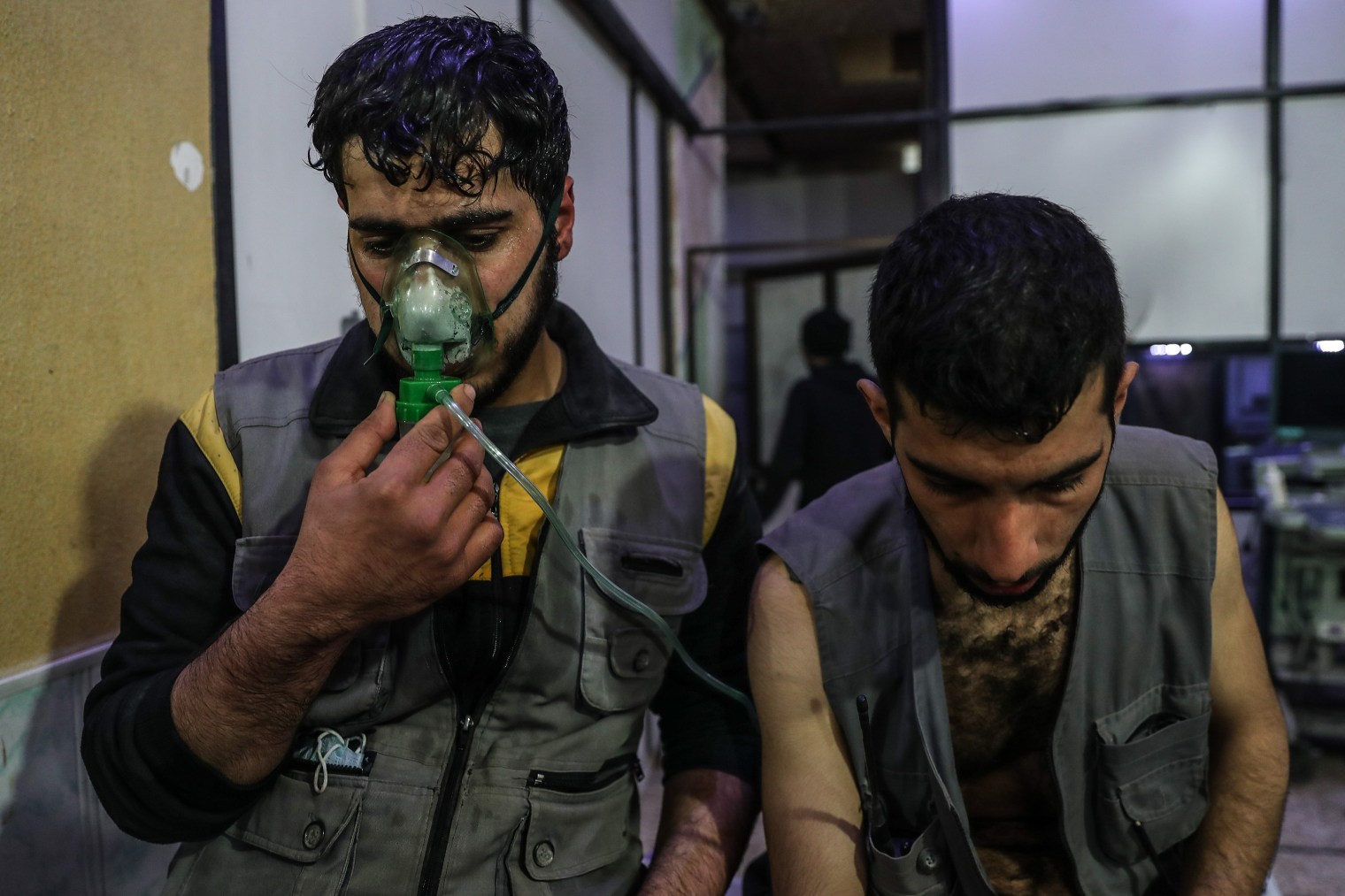 Among those who received breathing assistance were two rescuers with the White Helmets, a group of volunteer first-responders. EPA-EFE/Shutterstock
Among those who received breathing assistance were two rescuers with the White Helmets, a group of volunteer first-responders. EPA-EFE/Shutterstock
The injured were exhausted. One injured man couldn’t finish his answer, as he was too tired to talk. After a typical bombing, you hear loud yelling and screaming. This time, you hardly heard their voices. “I need a blanket!” one injured man called out. “I am so cold.”
When the boy who died had arrived, he was covered in dust and smelled like chlorine. I saw a volunteer washing the boy’s body. He was trying to remove the smell.
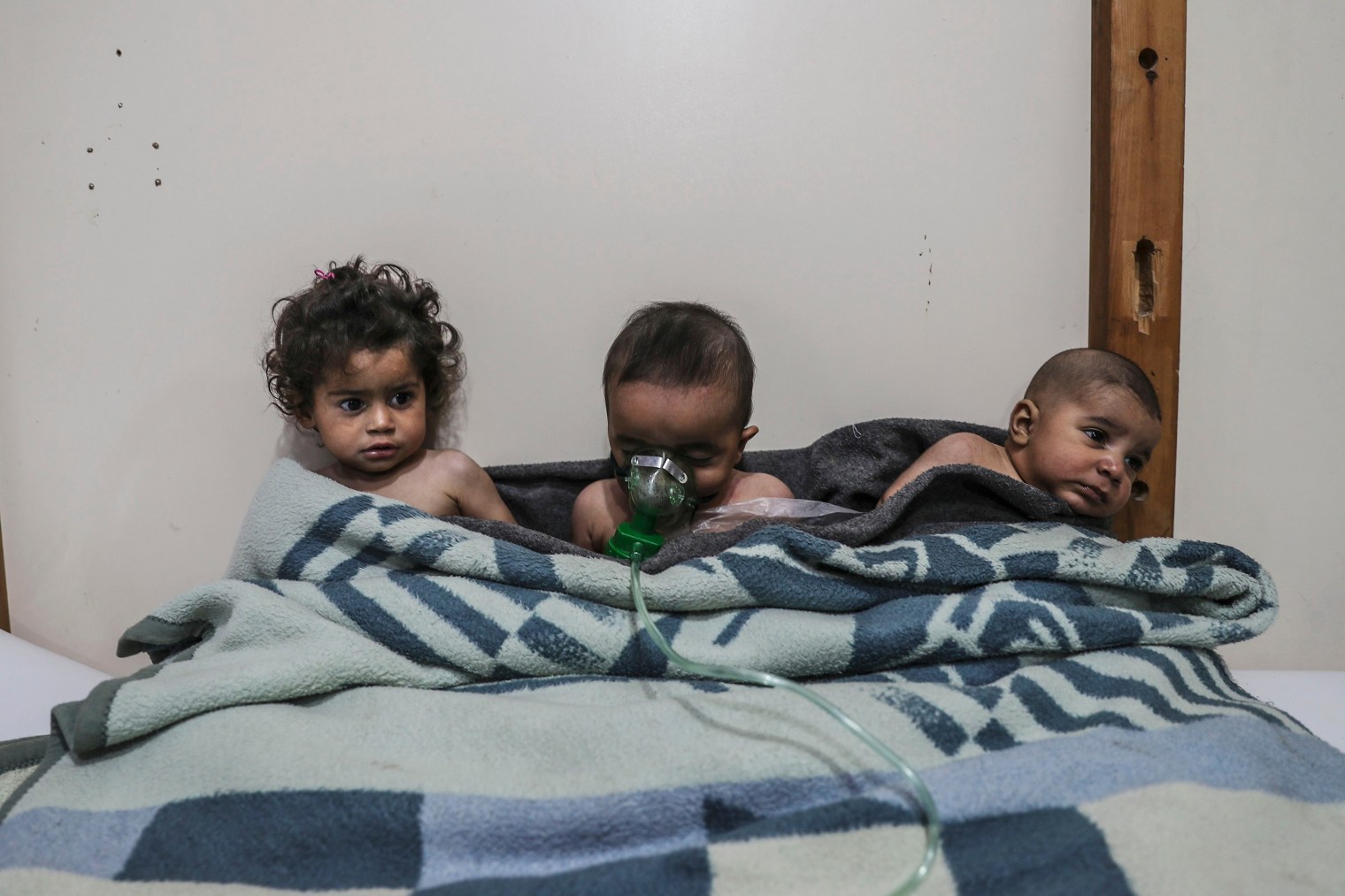 Three children receive care after the suspected chlorine attack. EPA-EFE/Shutterstock
Three children receive care after the suspected chlorine attack. EPA-EFE/Shutterstock
I usually stop photographing and leave a scene when I know I can get back to my house safely without airstrikes for a while. After that, I start going through my pictures.
As I did this, I thought back to the 2013 chemical attack in Ghouta, and just focused on the faces of the children. I zoomed in on the pictures and said to myself, “what if I was next?” I will remember their faces.
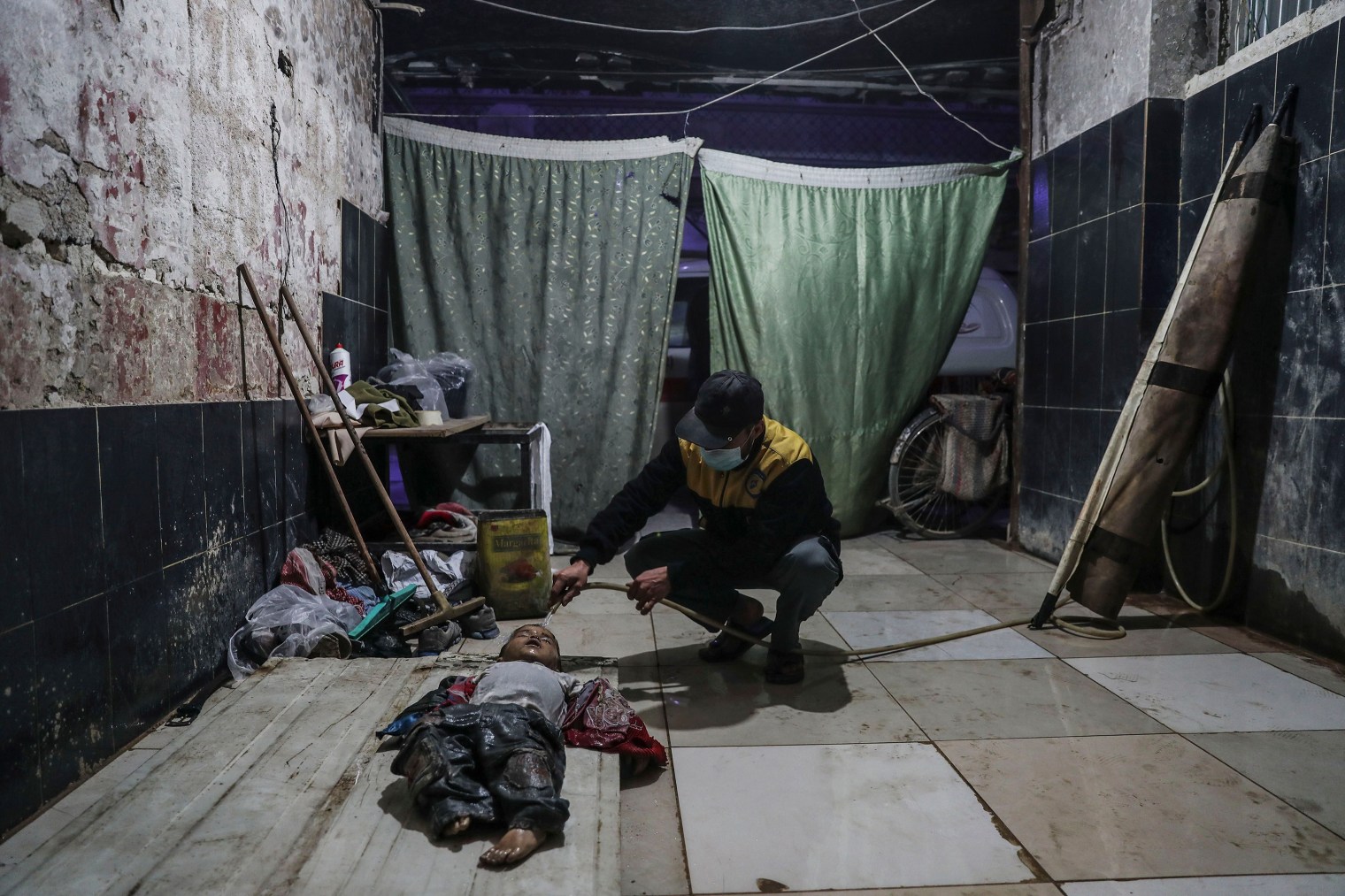 A White Helmet volunteer sprays water on the body of a boy, said to have died after exposure to chlorine. EPA-EFE/Shutterstock
A White Helmet volunteer sprays water on the body of a boy, said to have died after exposure to chlorine. EPA-EFE/Shutterstock
Mohammed Badra is a European Pressphoto Agency photographer based in Eastern Ghouta. In 2016, he was named TIME’s Wire Photographer of the Year.
Andrew Katz, who edited this photo essay, is TIME’s Deputy Director of Multimedia. Follow him on Instagram @katzandrew.